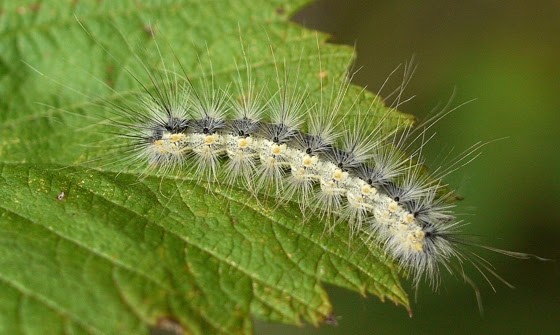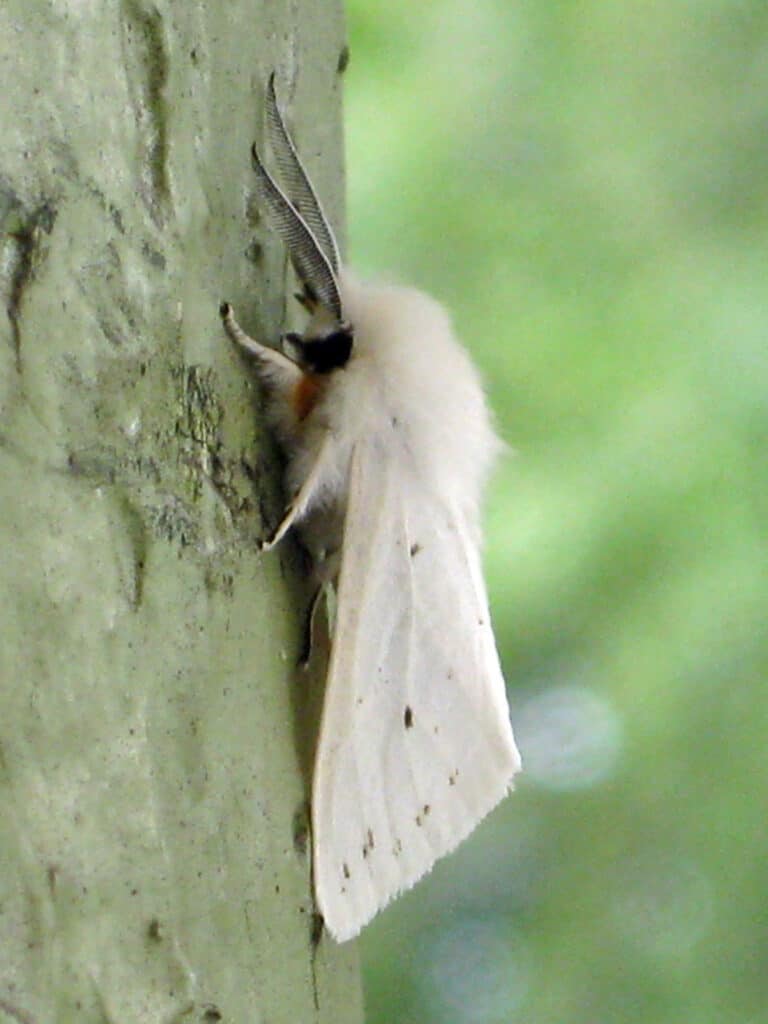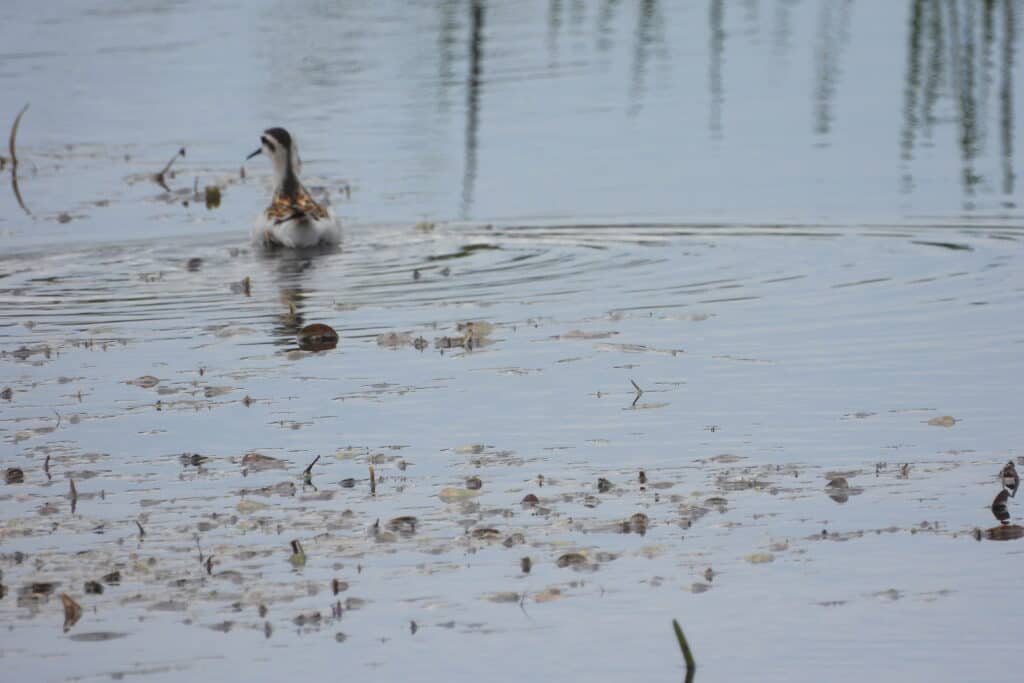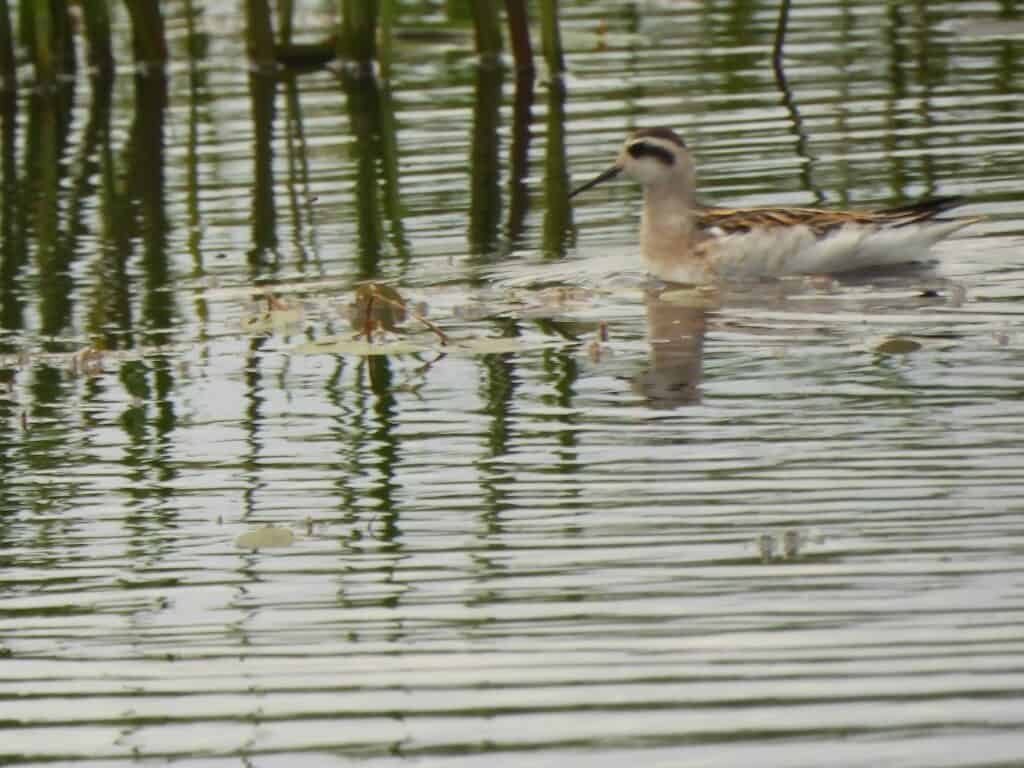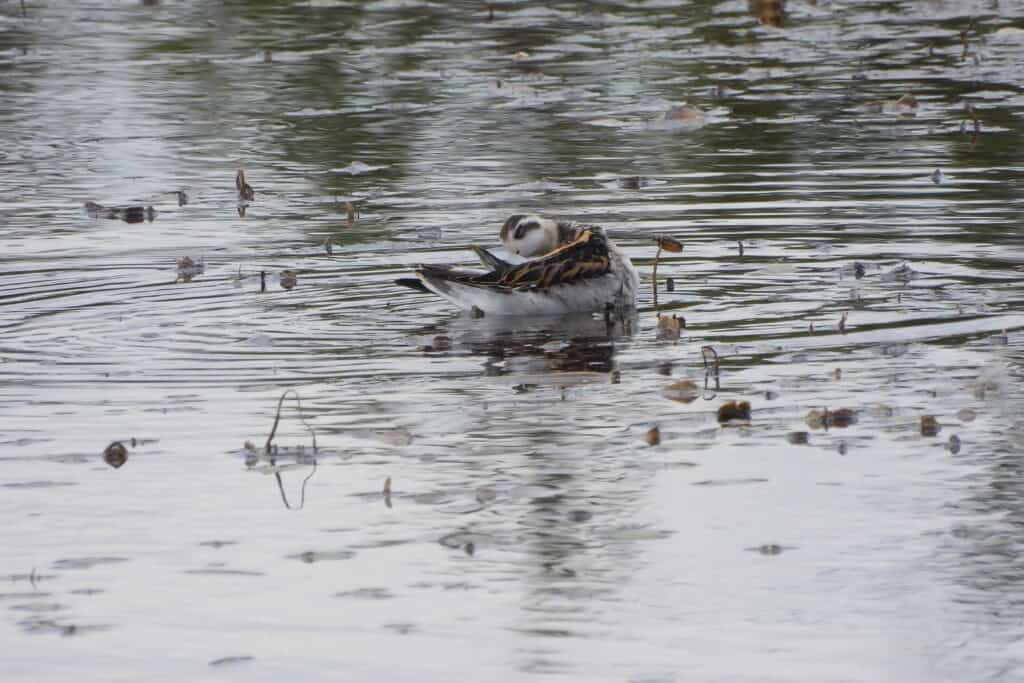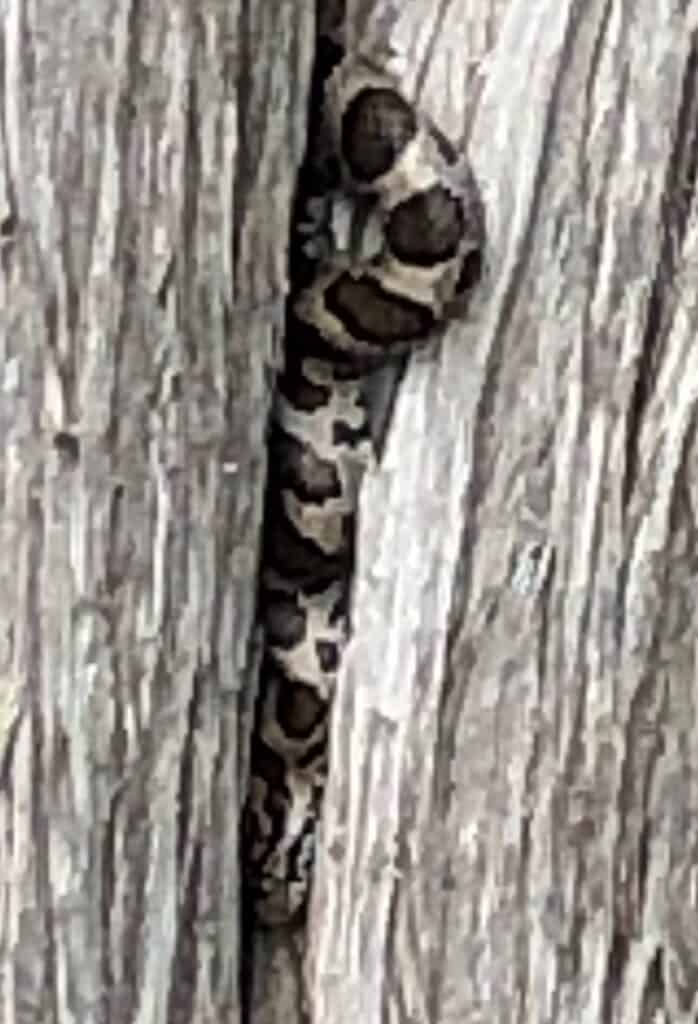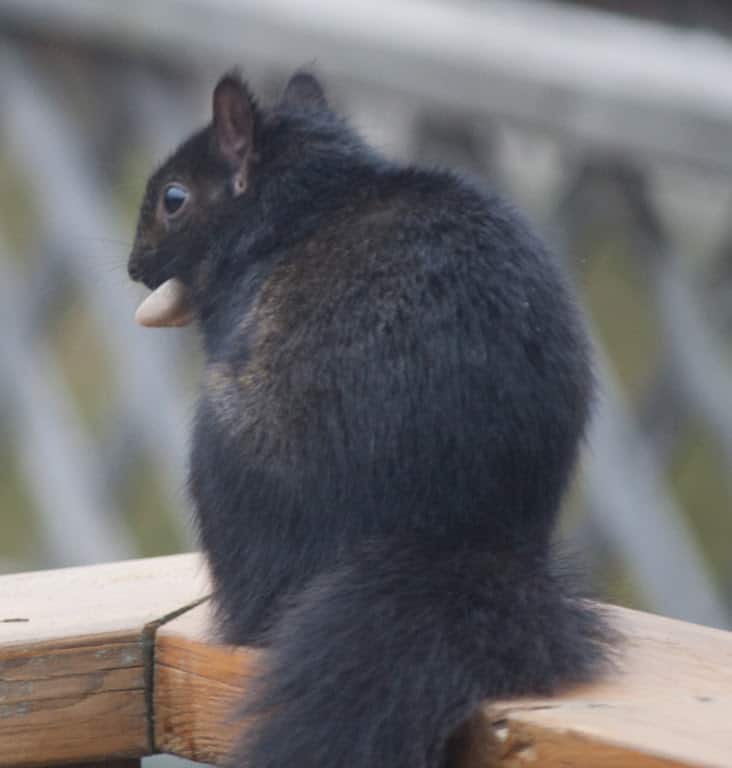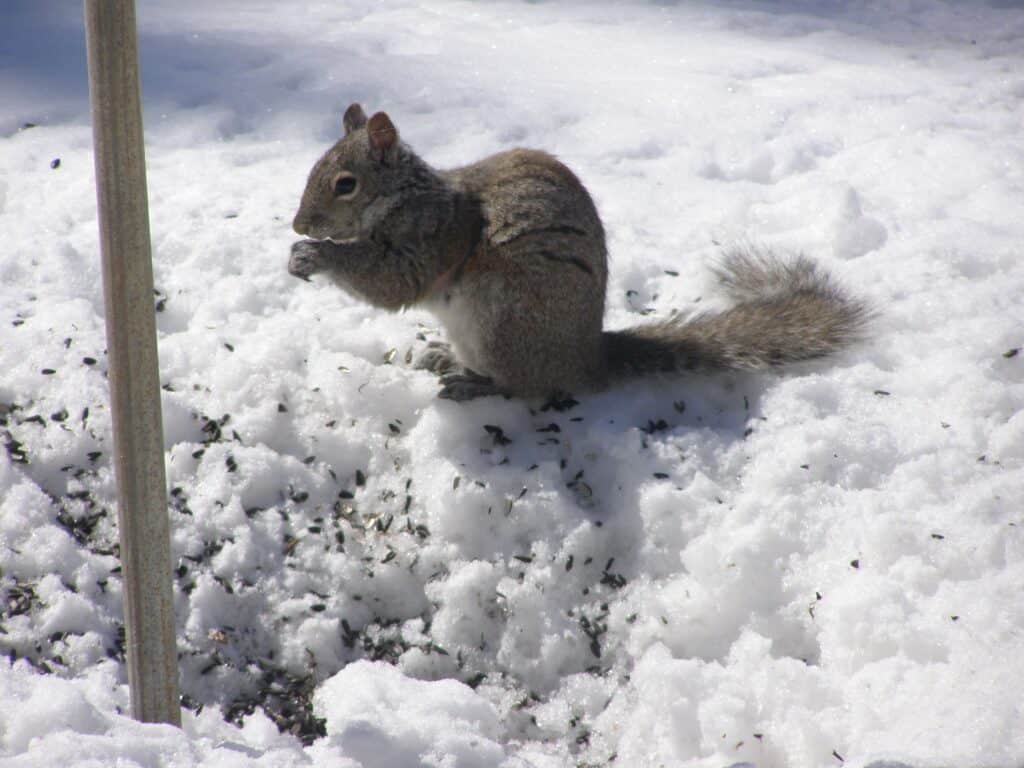Today we were out walking along the Rotary Trail between Parkhill and the London Street footbridge. Six or seven large nest-like webs were visible, hanging from different trees. There must be many more. I do not ever recall seeing these nests along that trail this time of year. I think I am seeing evidence of the Eastern Tent Caterpillar. Linda Branscombe
Actually, what you were seeing were the “feeding tents” of the Fall Webworm. I’ve attached a photo. They are present every year in late summer, although there seem to be more this year. They don’t do much in the way of damage, beyond the foliage within the webbing. They are also a native species. Other than being unsightly, there’s nothing to be concerned about. Forest and Eastern Tent Caterpillars are only present in the spring through early summer. DM
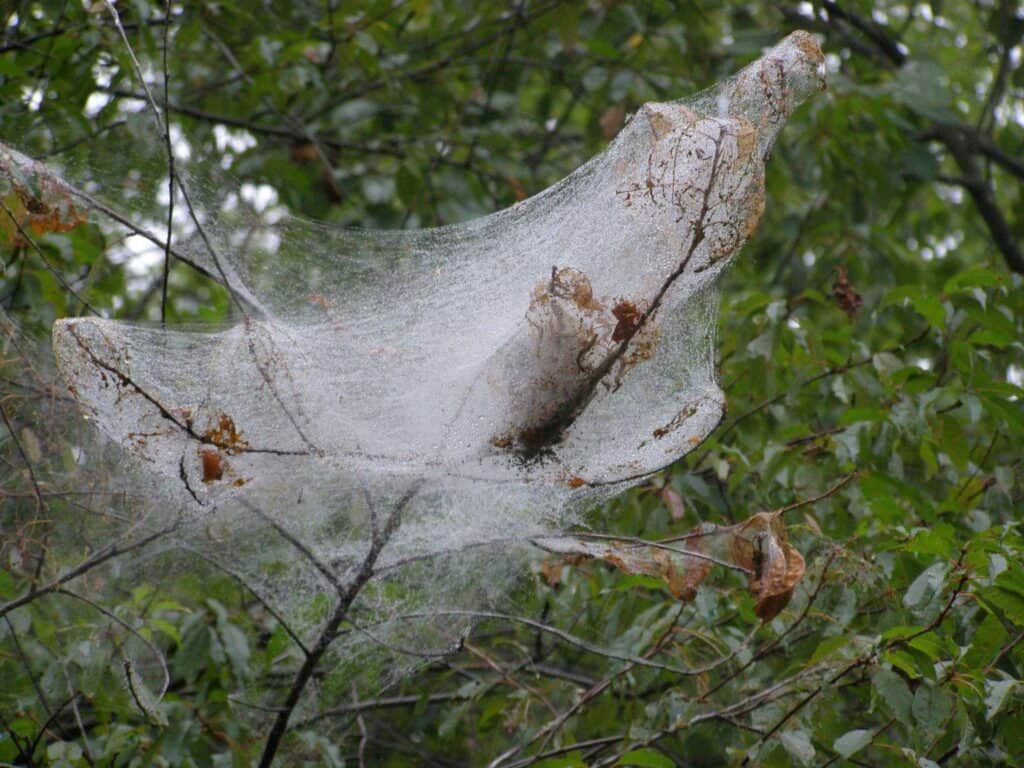
I live in Edgewood Park on the Mt Pleasant Road. Living here for 45 years, I always look forward to the blackbirds congregating in the fall. On the morning of September 6 at 6:45, I was outside with my dog and witnessed the largest flock of blackbirds I have ever seen. They must of been coming out of the marsh area south of Mt Pleasant Road and congregating in the wooded area just north of our subdivision. I watched with disbelief as about two minutes passed and they were still going by. I then looked at my watched and timed them for another two minutes! It seemed like something that I had read about – these huge flocks of birds seeming in endless numbers years ago. Norm Scott
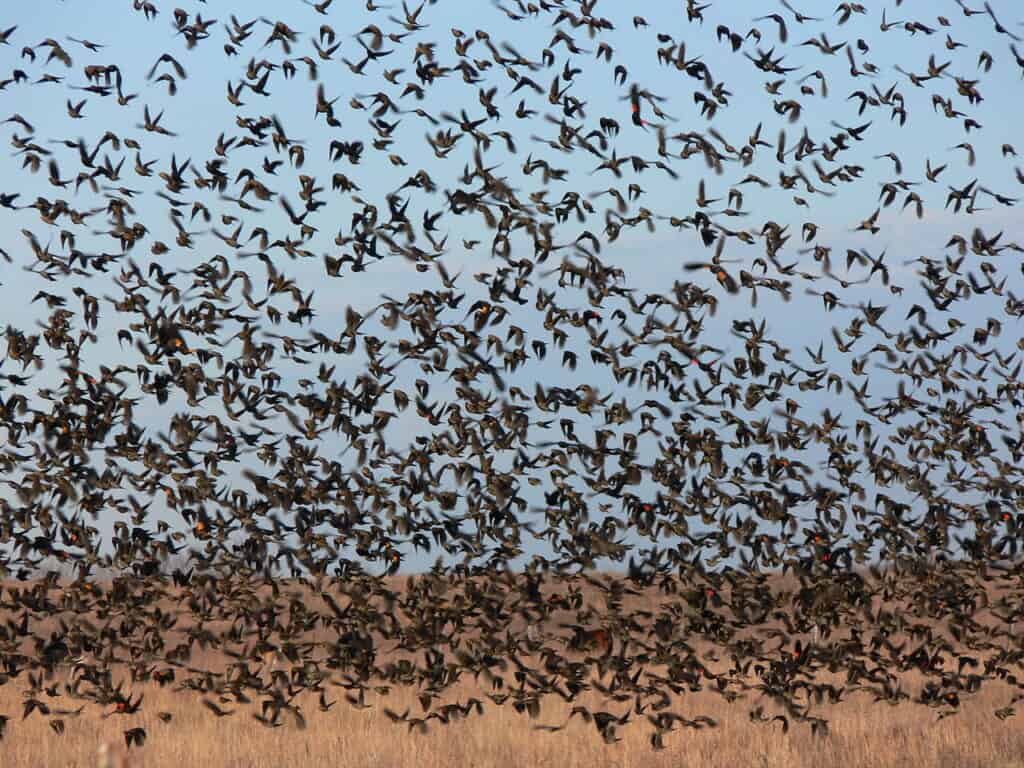
The Snapping Turtle nest we covered back on June 19, 2020 has produced a whopping 42 hatchlings from a clutch of 43 eggs on September 1, several weeks earlier than usual for us. According to a publication on reptiles and amphibians by ‘The Friends of Algonquin Park’, a hot summer can result in a shorter incubation period. All 42 hatchlings were released into the Indian River. Stephenie Armstrong, Warsaw
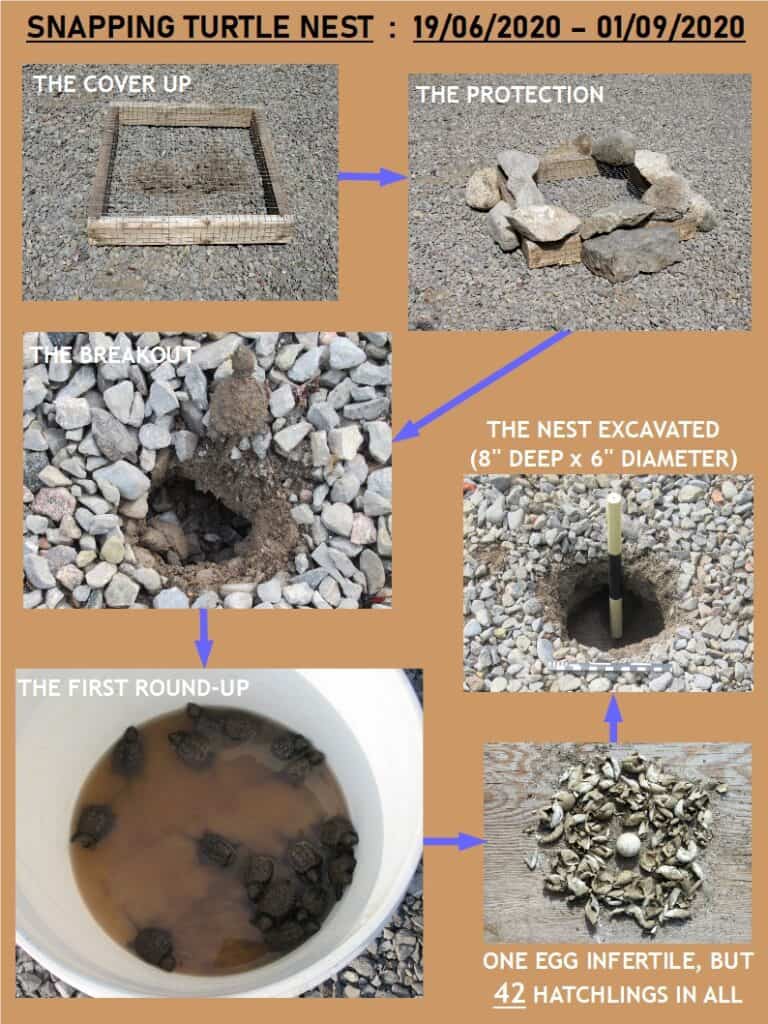
Collage by Peter Armstrong
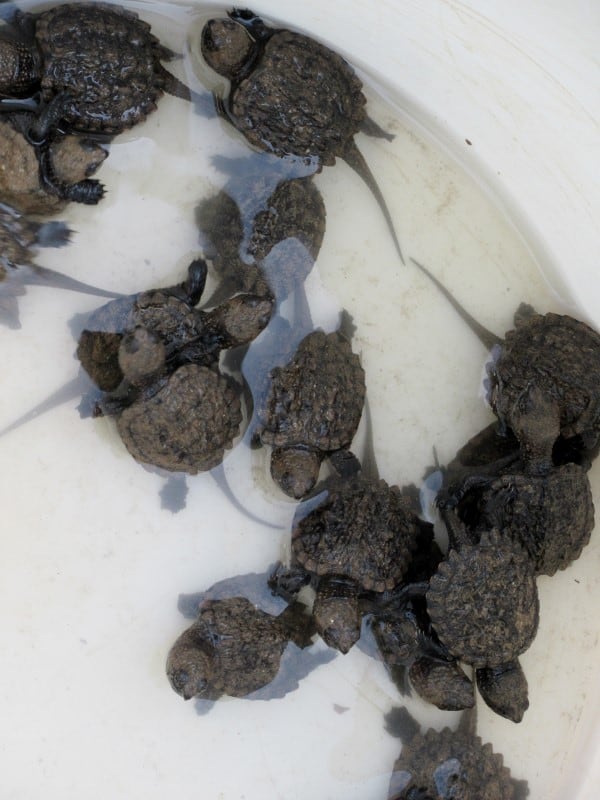
Snapping Turtle hatchlings – Stephenie Armstrong
I’ve been having a great time lately observing all the insect life on a patch of goldenrod in my backyard. Just like you talk about in your first book, I’m seeing different types of wasps, bees and flies, as well as locust borer beetles, ants, spiders, ambush bugs, something that looks like a mosquito on stilts, and maybe even a wee mantid of some sort. At night, various moths pay the goldenrod a visit, and I see more spiders than during the day. I have noticed something that puzzles me, though. I wonder if some insects have a bewitching hour or temperature below which they can’t move? Every evening I see a few bees, wasps, flies and long-horned beetles that are still alive on the goldenrod but can barely move. Are they in some kind of state of torpor? They remain the next morning, but disappear in a few hours. I noticed a female cardinal in the patch early one morning, perhaps taking advantage of an easy meal of helpless prey. Kathryn Sheridan
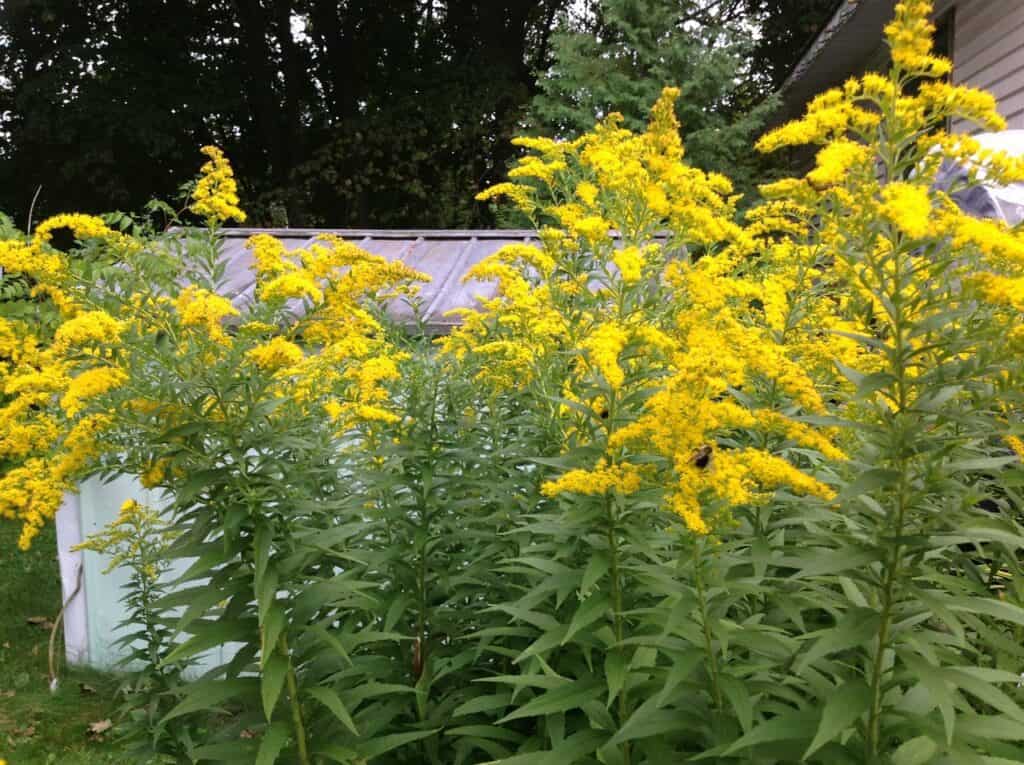
My daughter, Becca, took this picture on September 8 of a rare Red-necked Phalarope at Lock 25 on the Otonabee River. Six of these birds turned up at the nearby Lakefield Sewage Lagoons on September 10. Audrey Keitel
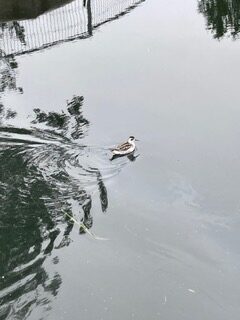
On September 12, I photographed this Great Egret at the millpond in Millbrook. Sylvia Arsenault
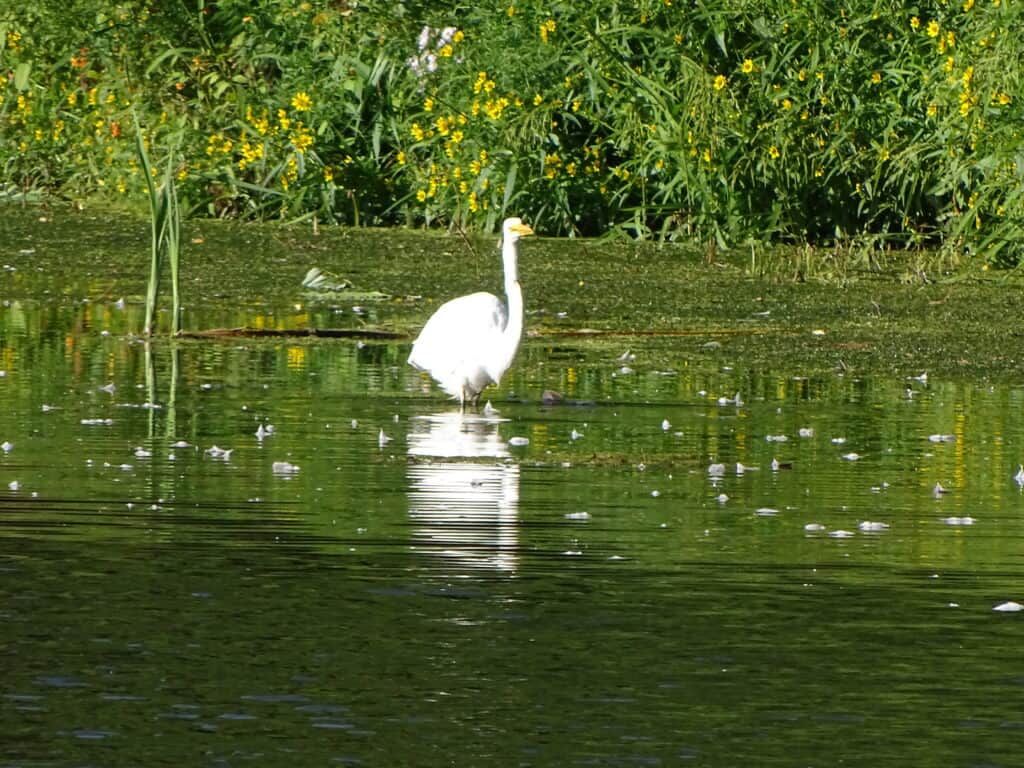
My brother-in-law (Paul Barber) spotted this rare Red-necked Phalarope on the Douro 2nd line, north of Cty Rd 8, on September 6. Carl Welbourn
I have a mature oak tree in my yard which over hangs my deck. For the past month or more, the Gray Squirrels have been biting off the last 6 to 8 inches of the branches. They got the acorns long before this, and I’m stumped as to why they would do this. The branch tips just fall to the deck and are ignored. The tree looks healthy. No invasion by the Gypsy Moth is visible as the neighbouring birch have had. The canopy has always been full and dense, but now is looking quite naked. Might you have any idea as to why the pesky squirrels have chosen this summer to damage the oak, whereas other summers all they wanted were the acorns? Alice Tucker.
My only possible explanation is that they are after the leafed twigs to use in their nests. D.M.
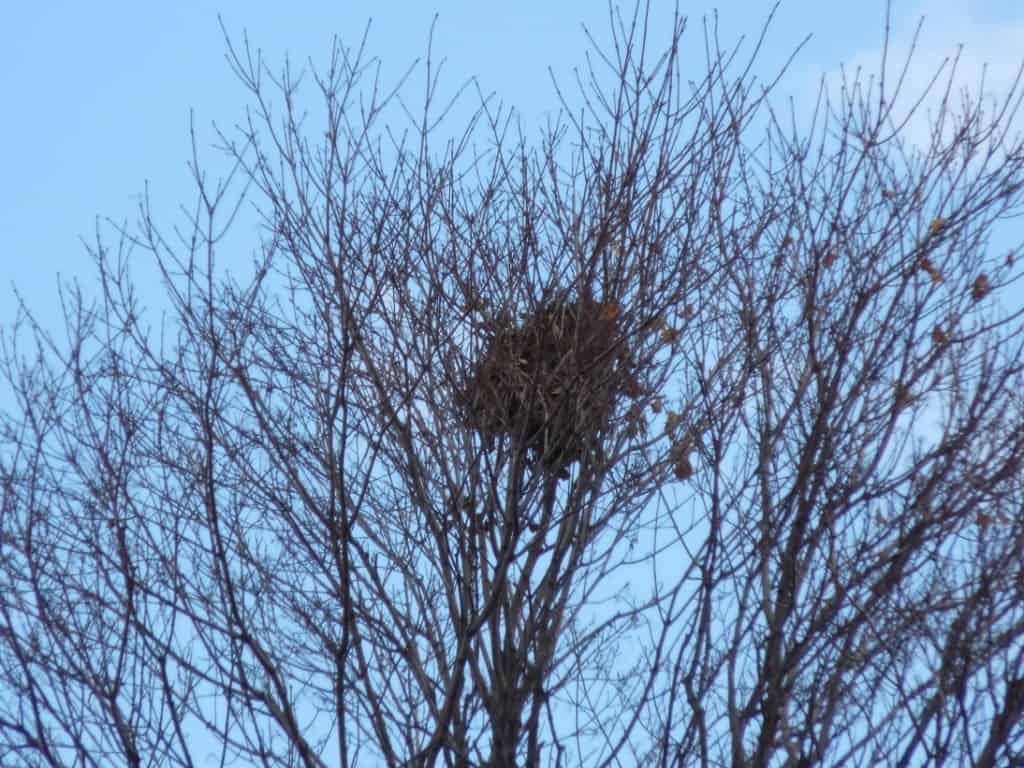
I wonder if you have ever encountered this: For three mornings in a row this month, we have watched a Downy Woodpecker feeding from the hummingbird feeder. I have never observed this behaviour before. Audrey Keitel, Keene
I have seen this, Audrey, on a handful of occasions. Others have reported it to me, too. Sapsuckers, of course, routinely feed on sap.
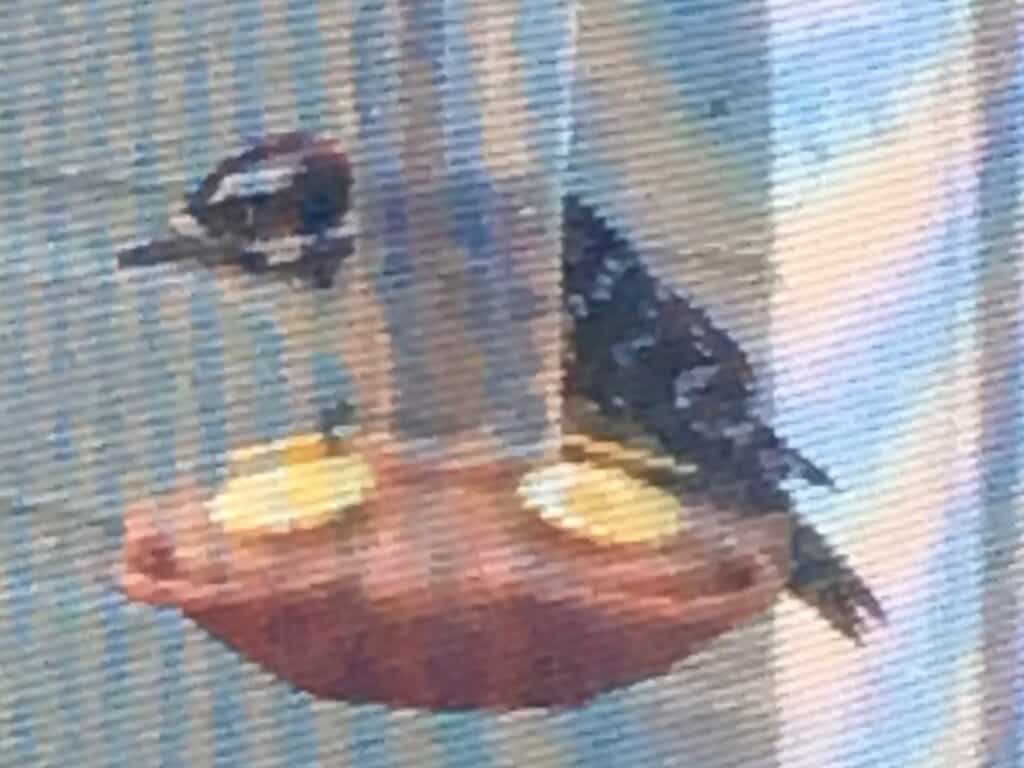
My friend Gail Grant and I were out enjoying the warmth September 19 on the south side of Lakefield by the river. She noticed and photographed this little Eastern Milksnake coming out of a cleft in the tree. Mary-Anne Johnston
We have had an abundance of grey squirrels this summer. One of them was consistently taking stones from my flower garden and running off with them. I have seen him bury some. He leaves some lying in different places around the yard. I thought maybe he had lost his mind until I saw other posts about stone stealing squirrels. We live in Winnipeg, Manitoba where the squirrels seem to have had a population boom this year! Margaret Paulson, Winnipeg, Manitoba
We have tumbled stones in our garden where we also feed the birds; squirrels help themselves, too. The squirrel chooses one similar in size to peanuts I feed them. It digs a hole in the grass lawn and buries the stones like he does with shelled peanuts. In the past I’ve seen large crows watching the squirrels and then steal his buried peanuts. I live in a semi rural area next to a farm field. Bonnie Walker, Port Washington, Wisconsin
